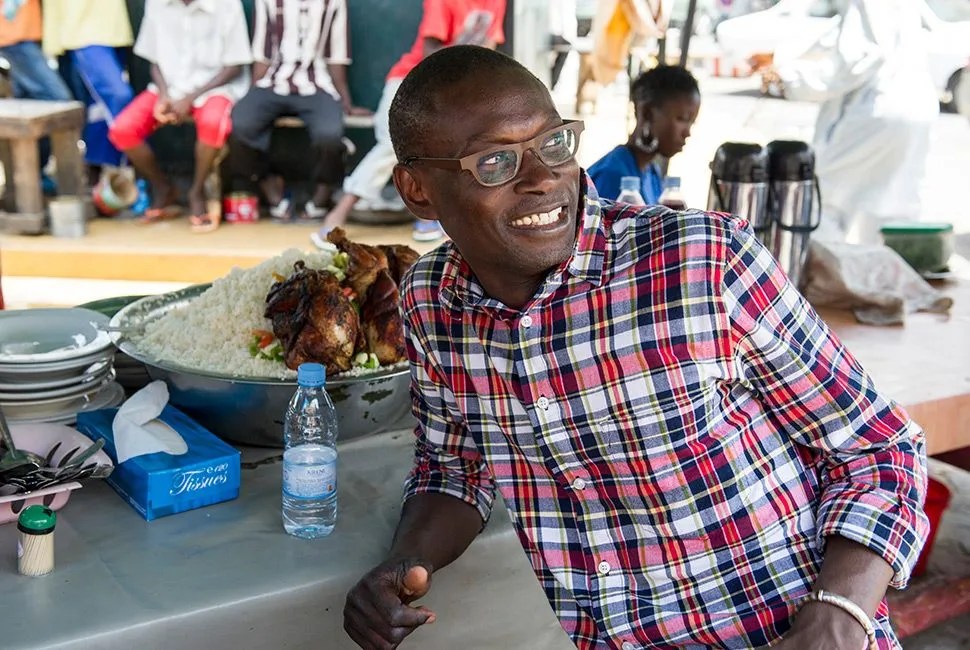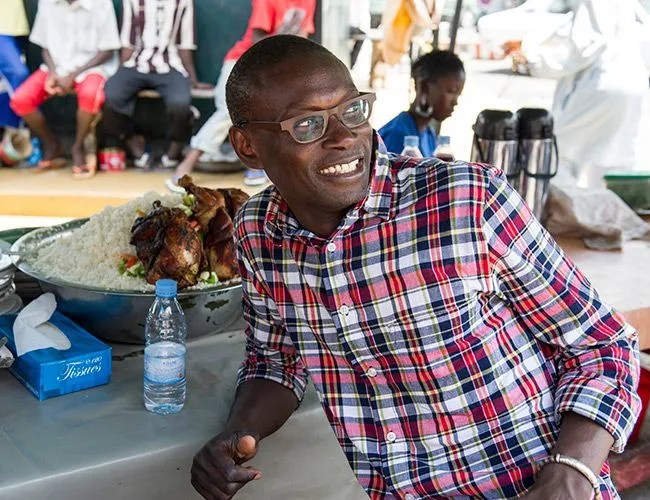In Senegal, men don’t cook. We sit entombed, couch-dazed, singly and in clusters, pondering the gnawing, fathomless depths of our stomachs, while women chop and ladle and flash-fry in wreaths of steam, sweating like welders. I know Senegalese men who couldn’t tell you whether they own a toaster, or what exactly one is used for. Meals simply appear, as if by magic, from a kingdom beyond the living room. If Senegalese women were to declare a national strike, the whole country would starve. It’s an ancient system that, even today, admits scant revision.
Which partly explains why Pierre Thiam, growing up in a family of outlier female cooks in Dakar, never thought of becoming a chef. His mom threw down in the kitchen, and ditto his aunt: true visionaries lassoing together dueling strands of traditional African cuisine and European standards. One night it’d be soupoukandia, Senegal’s blistering gumbo of Scotch bonnet peppers, okra and smoked catfish poured over rice; the next, crab gratin, gently béchameled and heaped in scallop shells to be finished in the oven. As a boy, transfixed by his mother’s Larousse Gastronomique — the grand old leather-bound edition with the Escoffier preface, as big as an engine block — Thiam recognized in the folds of its grease-stained pages something rare and profound but inaccessible.
“You know that moment in childhood, looking back, when a light goes on?” he says now. “That was it. It wasn’t playing soccer in the streets. It was a cookbook. But the kitchen was not for boys.”
Twenty years later, during a layover in New York City on his way to college in Ohio, Thiam was cleaned out by crack addicts in a Times Square hotel — a 1980s Times Square hotel: silverfish in the shower drains, a lingering odor of death, etc. His entire savings, shoes, socks, everything, poof! He’d been headed to Baldwin-Wallace College in Cuyahoga County to study chemistry. Instead, he wound up as a busboy in the West Village living hand to mouth. It’s the stuff immigrant-bootstrap stories are made of. He’s still never been to Ohio.
Thiam mentions some of this in his new cookbook, Senegal: Modern Senegalese Recipes from the Source to the Bowl (Lake Isle Press), though minus the crack addicts, or how, at that West Village restaurant, the first thing he noticed was that all the cooks were men, and the second thing he noticed was the food was the same food from his mom’s Larousse.
“I was like, finally, this is what I’ve always wanted to know about,” he says.

